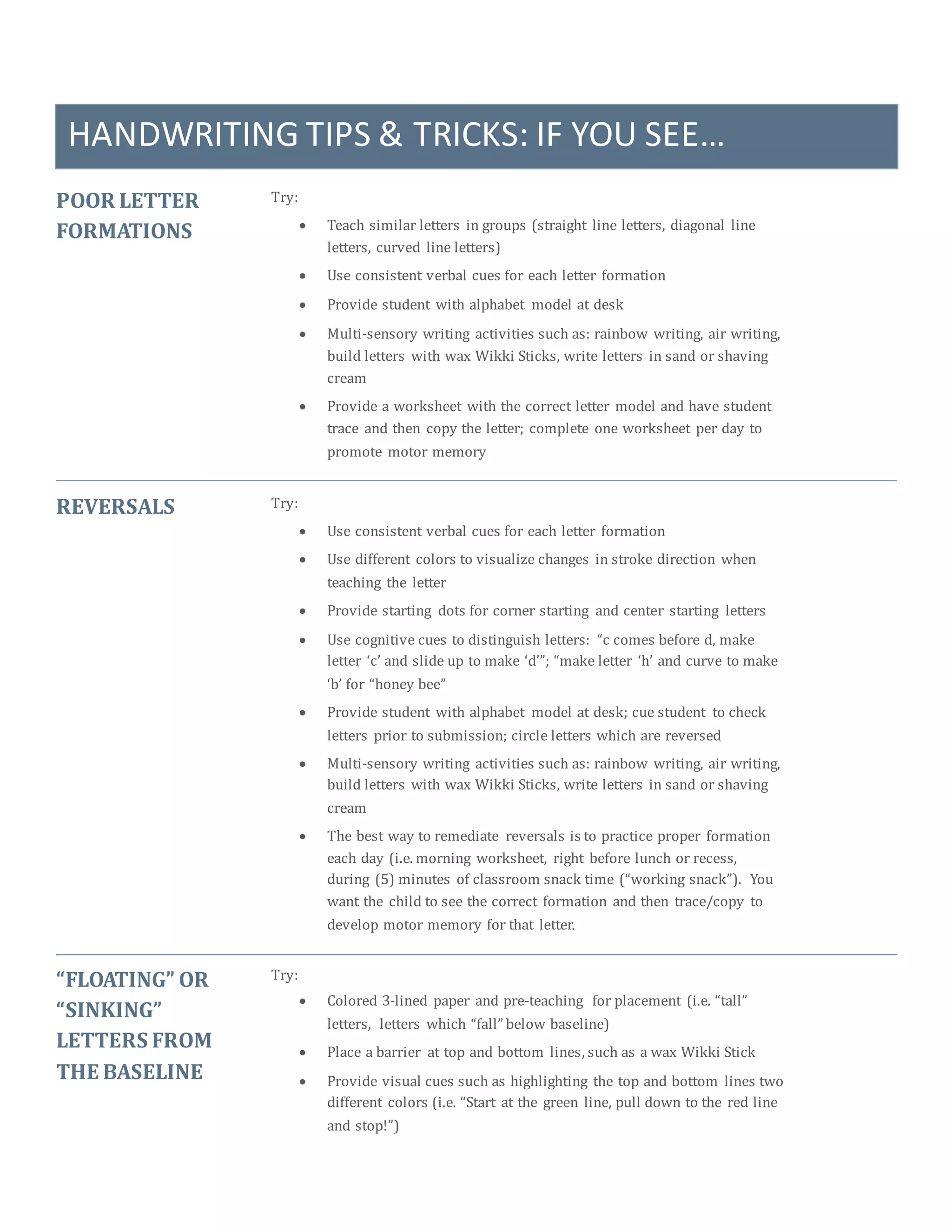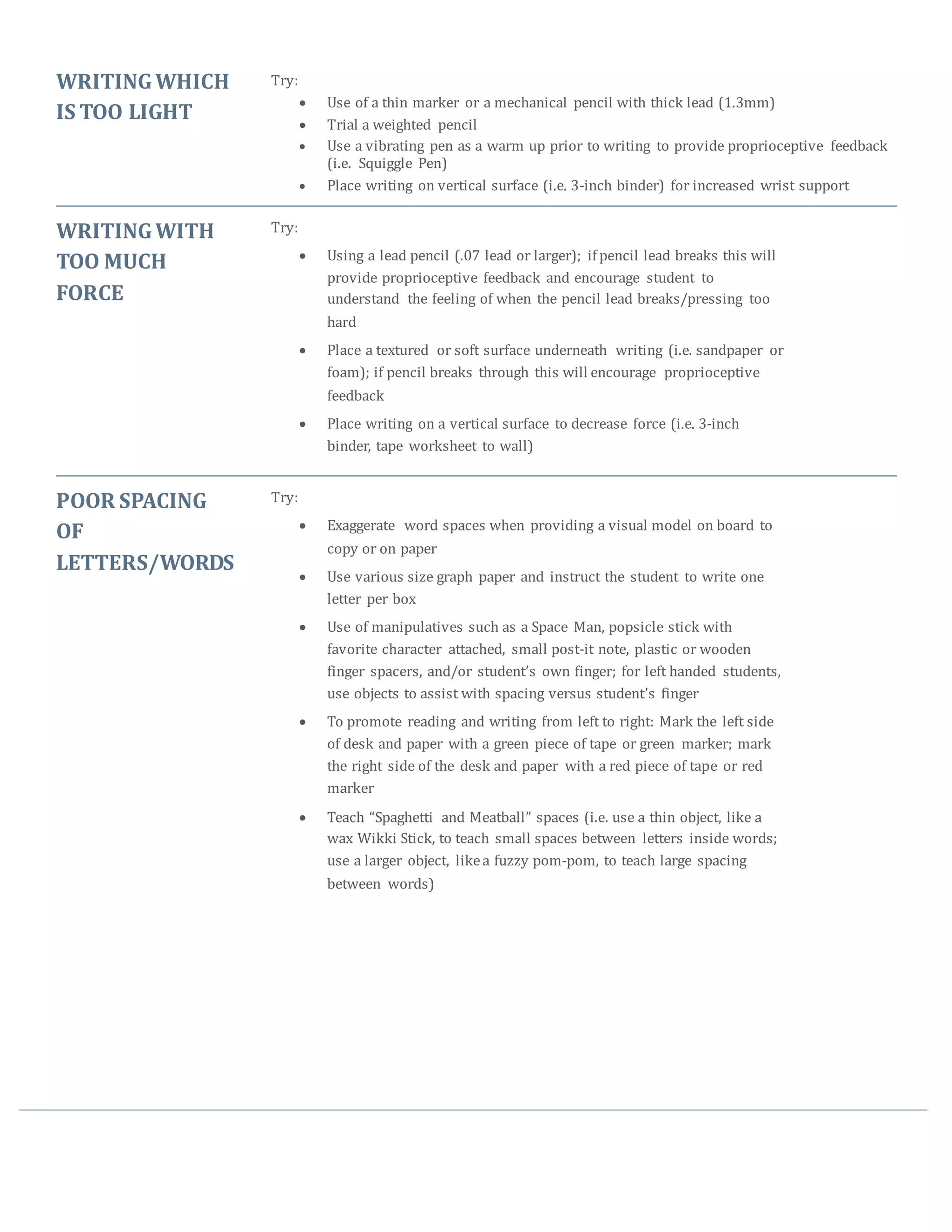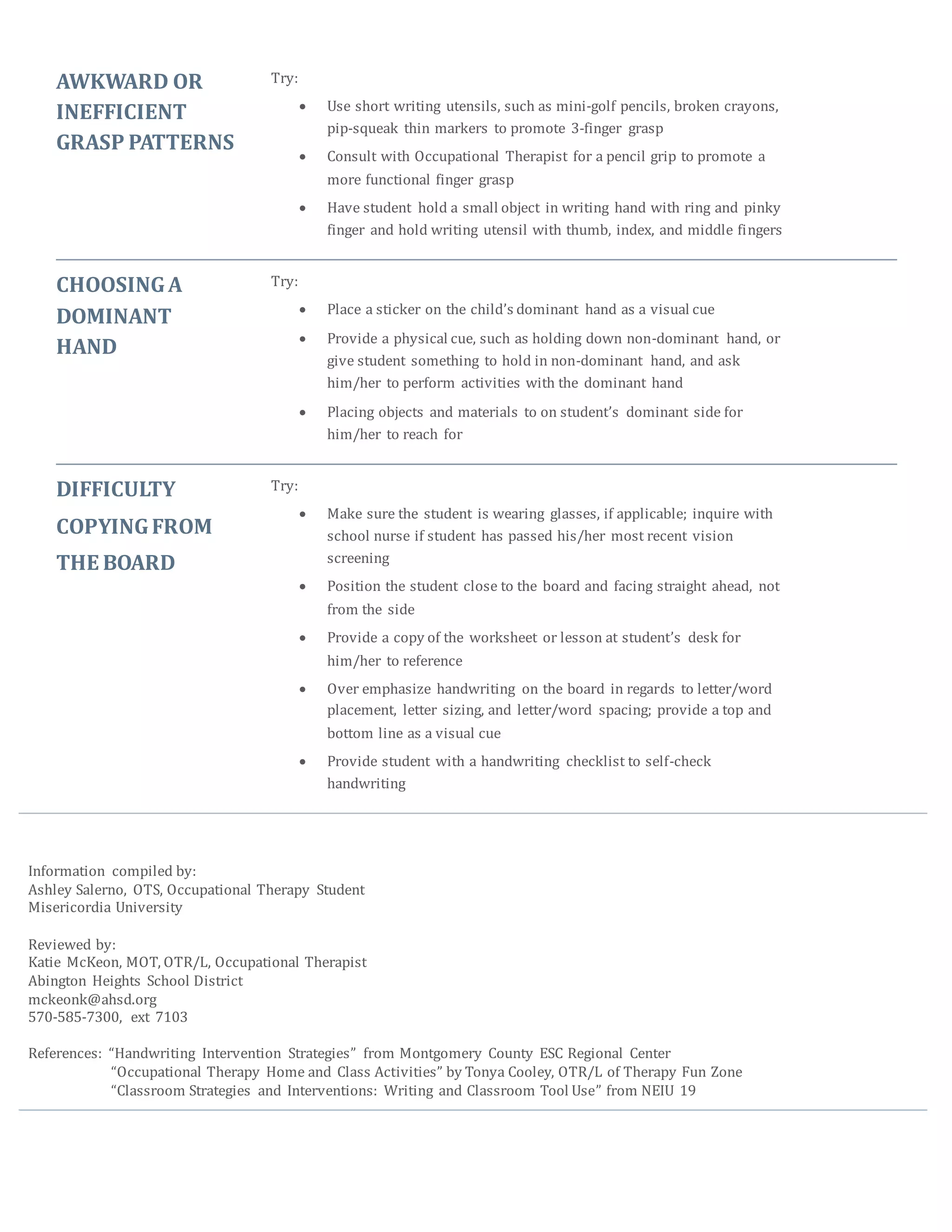This document provides tips and tricks for addressing common handwriting issues in students. It suggests grouping similar letters, using consistent verbal and visual cues, and multi-sensory activities to address poor letter formations. For reversals, the tips include using different colors, starting dots, and cognitive cues comparing letters. Floating or sinking letters can be addressed with colored lined paper, barriers, and highlighting baseline lines in different colors. The document provides additional strategies for issues like writing that is too light, has too much force, has poor spacing, awkward grasps, choosing a dominant hand, and copying from the board.



